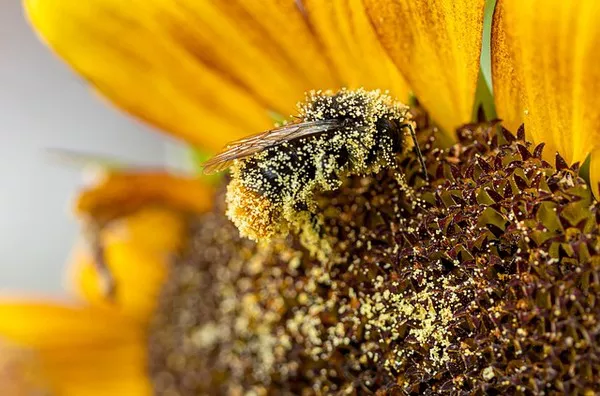Bees play an indispensable role in pollinating plants, contributing to the biodiversity and productivity of ecosystems worldwide. As pollinators, they are essential for the reproduction of many flowering plants, including those that produce fruits, vegetables, and nuts. To support and conserve bee populations, it is crucial to understand what flowers bees like. This article delves into the factors that influence bee flower preferences and offers insights into how gardeners, conservationists, and individuals can create bee-friendly environments.
The Importance of Bees in Pollination
Before delving into the types of flowers bees prefer, it’s essential to understand the critical role bees play in pollination. Bees are among the most effective and efficient pollinators in nature. When bees visit flowers to collect nectar and pollen for their food, they inadvertently transfer pollen from one flower to another. This transfer facilitates fertilization and ultimately leads to the formation of fruits and seeds. Many of the foods humans rely on, such as apples, almonds, and blueberries, are the direct beneficiaries of bee pollination.
Factors Influencing Bee Flower Preferences
Bees are selective when it comes to choosing flowers to visit. Several factors influence their flower preferences, including:
1.Flower Shape: Bees prefer flowers with a particular shape that allows them easy access to nectar and pollen. Tubular or funnel-shaped flowers, like those of foxgloves or penstemons, are well-suited for bees, as they provide a convenient landing platform and a direct route to the nectar.
2. Color: Bees are attracted to specific flower colors, primarily blue, purple, and yellow. These colors are easier for bees to detect, and flowers with these hues are more likely to attract their attention. For example, lavender, sunflowers, and asters are popular choices among bees due to their vibrant colors.
3. Scent: A flower’s scent can be a strong attractant for bees. Fragrant flowers, like lavender or roses, emit enticing aromas that can guide bees to their location. The scent also helps bees identify flowers with abundant nectar and pollen.
4. Nectar and Pollen Availability: Bees are efficient foragers, and they prefer flowers that offer an ample supply of nectar and pollen. Flowers with easily accessible nectar and an abundance of pollen are more likely to attract and retain bee visitors.
5. Blooming Season: Bees need a consistent source of food throughout their active seasons. Flowers that bloom at different times during the year help provide a stable food supply for bees. Early bloomers like crocuses and late bloomers like goldenrods are valuable in this regard.
6. Flower Size: Larger flowers are often more appealing to bees as they provide more nectar and pollen. However, smaller flowers can also attract bees if they are clustered together in dense patches.
7. Native Plants: Bees have co-evolved with native plants, and they often have a strong preference for these species. Native plants are well-adapted to the local climate and soil conditions, making them valuable resources for local bee populations.
8. No Pesticides: Bees are highly sensitive to pesticides, so flowers grown without the use of harmful chemicals are more likely to attract and support bee populations.
Flowers Bees Prefer
Now that we understand the factors that influence bee flower preferences, let’s explore some specific flowers that are particularly attractive to bees:
Lavender (Lavandula spp.): Lavender is a favorite among bees due to its vibrant purple color and delightful fragrance. It blooms in summer and provides a rich source of nectar.
Sunflowers (Helianthus spp.): Sunflowers’ large, bright yellow blooms are a beacon for bees. They offer copious amounts of pollen and nectar.
Asters (Aster spp.): Asters come in various colors, but the blue and purple varieties are especially appealing to bees. They bloom in late summer and fall when other nectar sources may be scarce.
Crocuses (Crocus spp.): Crocuses are early bloomers, providing much-needed food for bees in late winter or early spring. Their small, colorful flowers are a welcome sight for pollinators.
Bee Balm (Monarda spp.): True to its name, bee balm is a favorite of bees. Its tubular, red or purple flowers are a perfect fit for bee tongues and provide ample nectar.
Goldenrods (Solidago spp.): Goldenrods are late bloomers that produce bright yellow flowers in late summer and fall. They are a crucial source of nectar for bees before winter.
Foxgloves (Digitalis spp.): Foxgloves’ tubular, bell-shaped flowers are well-suited for bees. However, they should be planted with caution, as they can be toxic to humans and pets.
Penstemons (Penstemon spp.): With their tubular flowers in shades of red, purple, and pink, penstemons are highly attractive to bees. They are a valuable addition to pollinator gardens.
Creating a Bee-Friendly Garden
If you’re interested in supporting bee populations and creating a bee-friendly garden, here are some practical tips:
Plant a Variety of Flowers: To provide a continuous source of food, choose a mix of flowers that bloom at different times of the year.
Include Native Plants: Native plants are well-suited to local bee species and ecosystems. Incorporate them into your garden to support native bee populations.
Avoid Pesticides: Opt for organic gardening practices to protect bees from harmful pesticides.
Group Flowers Together: Plant flowers in clusters or drifts to make them more visible and accessible to bees.
Provide Water: Bees need water, especially in hot weather. Create a shallow water source with pebbles or stones for them to drink from.
Leave Some Bare Ground: Many bee species nest in the ground. Leave a small area of bare soil for these ground-nesting bees.
Conclusion
Understanding what flowers bees like is vital for promoting bee health and preserving their essential role in pollination. By planting a variety of bee-friendly flowers, including native species, in your garden and avoiding the use of harmful pesticides, you can contribute to the well-being of these remarkable pollinators. As bees thrive, so do the ecosystems they support, and the food crops we rely on for our sustenance.


